On a particularly sunny day in June 2023, James and I revisited the National Museum of Indonesia as we were curious with how it looked after being closed for renovations. Across the courtyard of the old wing, a few statues that were placed at inconspicuous locations caught my attention. Their carving style was more ornate and flamboyant than the other artifacts nearby. But these were not as ancient as the rest, for they were replicas of Singhasari-era Hindu deities carved out by highly-skilled Javanese sculptors around seven centuries ago. The originals happened to be residing at a museum in Leiden, the Netherlands, controversially moved away from their homeland when Indonesia was still a Dutch colony. Seeing them, as I often told James, was one of my main reasons for putting the Netherlands in the list of countries I most wanted to visit.
Not long after our trip to the museum, news broke that the former colonial power would soon return the very statues I had been dreaming of seeing to Indonesia. And on August 22 the same year, they finally arrived at the National Museum, welcomed by government officials and the media with much fanfare. However, less than a month later on September 16, a rather uneventful Saturday night suddenly turned into a nightmare no one had even remotely thought about: the most important museum in the country was on fire! Videos circulating on social media showed how the rear side of the old wing was consumed in an inferno.
My heart sank, and I immediately tried to remember what was on display in that part of the compound, desperately wishing that the damage wouldn’t be too extensive. In the aftermath of the incident, the museum was closed and the government announced that they would carry out fundamental reforms. Experts from around the globe were brought in to Jakarta to contribute not only to the recovery of the burned artifacts, but also to the improvement of the museum itself. I sighed with more than a little relief when I found out the items recently repatriated from the Netherlands were stored safely in another building.
During the museum’s closure, I regularly checked on their social media accounts to get updated on the latest developments of the restoration and renovation works. Month after month, I kept wishing to see them announcing their reopening. Finally, on October 15, 2024, the museum once again began welcoming the public. But they made it clear that this was only the first of multiple phases of the institution’s reinvention.
Last weekend, James and I went there to see its temporary exhibition highlighting the impact of last year’s fire, as well as to check out the repatriated collection from the Netherlands. The moment we stepped inside the vestibule of the 19th-century building, it was evident that the institution has indeed improved. Gone were ancient statues haphazardly tucked away in every corner making this section look like a sad storehouse. Instead, the space now feels airy with a better curation of items on display. As we walked toward the courtyard, I was ecstatic to see how the large 13th-century Nandi statue that was once cordoned off can now be marveled at closely. I still vividly remember getting scolded when I stepped on the grass surrounding this statue as I wanted to read the label placed right next to it. “How are visitors supposed to read that?” I protested at the staff member who shouted at me.
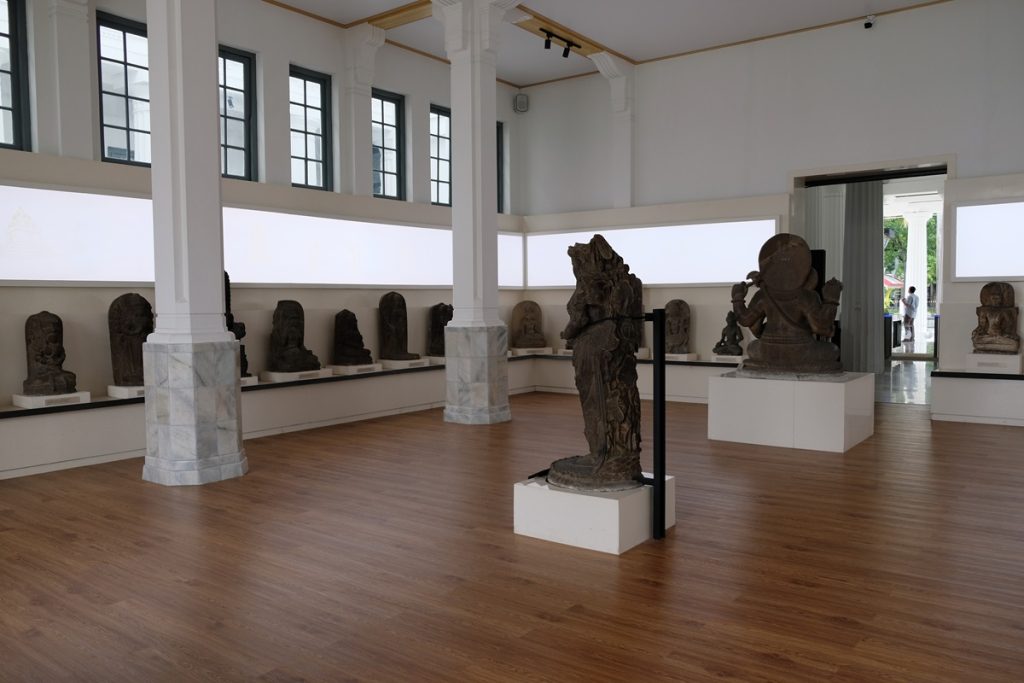
The vestibule now looks less cramped with a better curation of artifacts
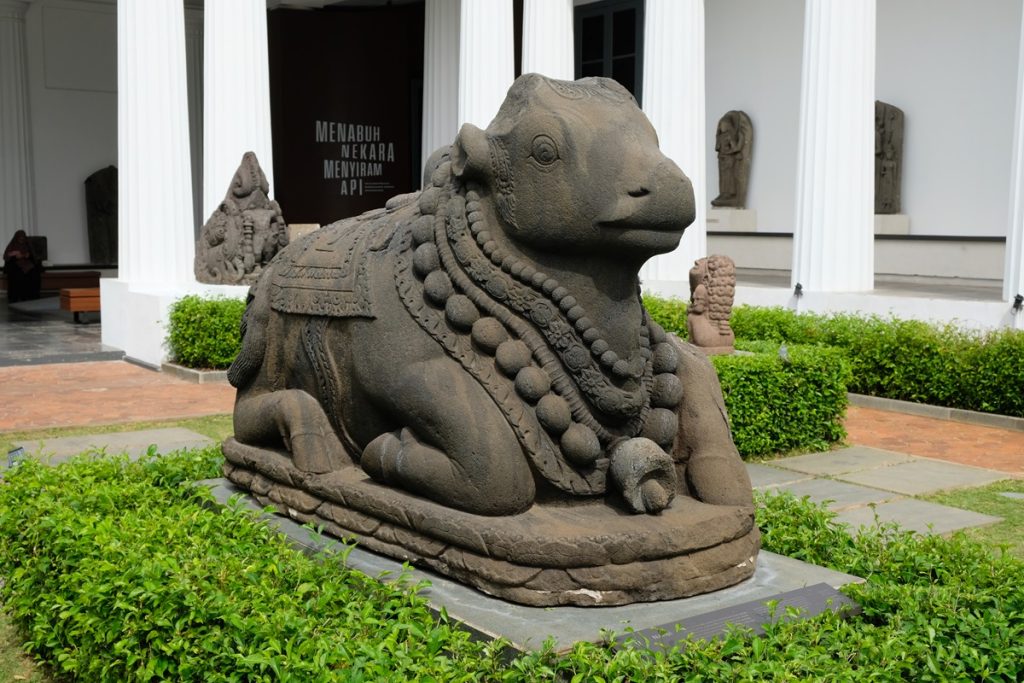
I felt ecstatic to finally be able to see this Nandi up close
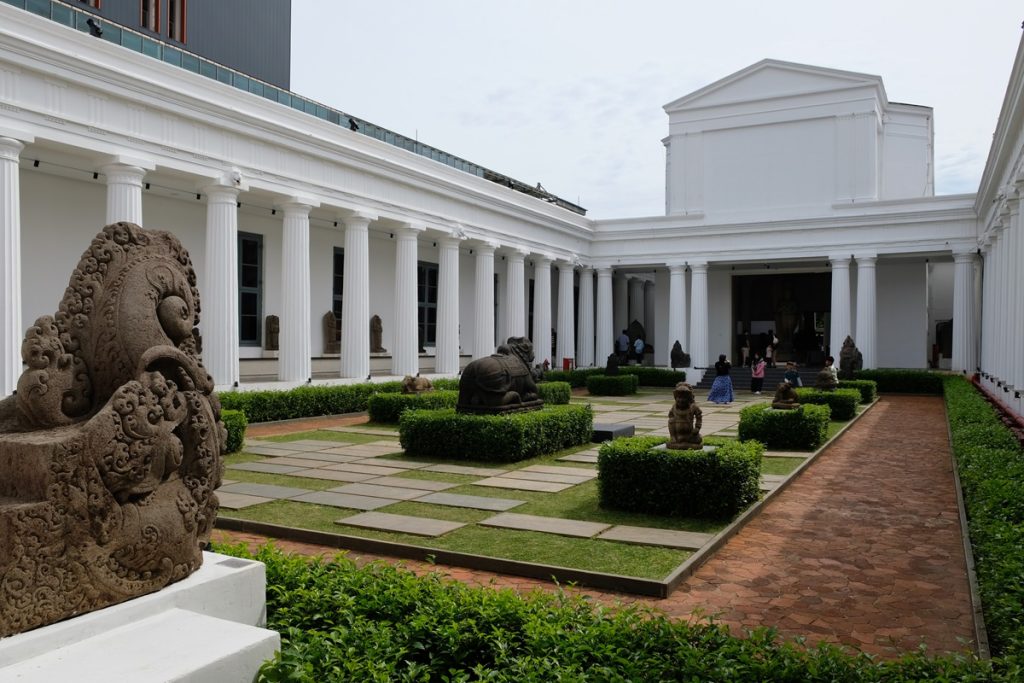
Toward a museum that is more welcoming and engaging
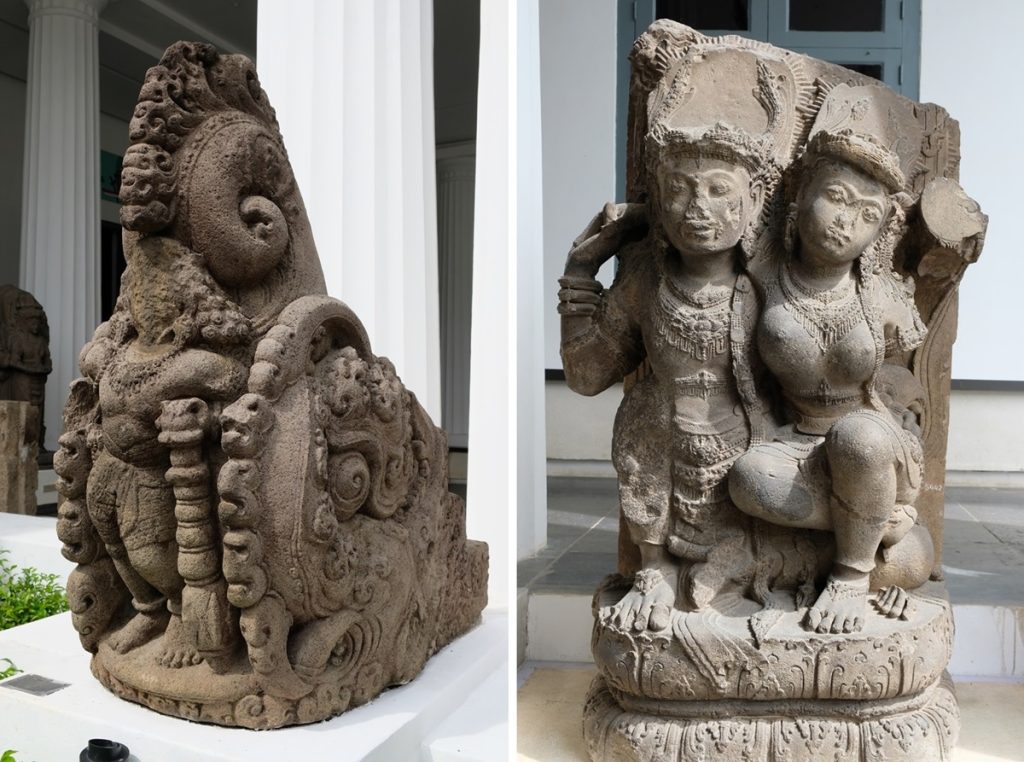
An 11th-century makara from Jambi in Sumatra (left); a royal couple from East Java from the 14th or 15th century
After looking at the bull up close (the cowbell was a cute touch), we headed to the first exhibition. Behind a glass window, visitors were presented with a harrowing scene of the debris from the incident. However, what was more heartbreaking was the artifacts scavenged from the ashes. Mangled bronze figurines, deformed wooden statues, sooted ceramics, the fire damage came in different forms. On the other side of the darkened room were two larger objects: a nekara (a bronze kettle drum) from 200 BCE warped and melted into smithereens and a bronze Buddha statue from around the second to the fourth century CE that looked severely beaten. These artifacts had survived for millennia but succumbed to the fire of the 21st century in a single night. To describe it as tragic is an understatement.
We walked to another part of the exhibition showcasing the tools the museum staff used to restore the damaged collection. Some beautiful figurines caught my attention, for they appeared to be perfectly unscarred. Apparently, that’s because they had been transferred to another section of the museum in preparation for an exhibition at the Nara National Museum in Japan. I won’t be surprised if some people see them as lucky charms as they clearly dodged the bullet.
We were now entering the newer wing of the compound, and there they were, the glorious Hindu statues from East Java which for decades had to call Leiden home. Titled “Repatriasi”, this exhibition also showcased dozens of Balinese paintings and wood carvings which although were not forcibly procured were returned to Indonesia nonetheless. Unsurprisingly, we spent so much time taking pictures of the large statues, each embellished with spectacularly ornate decorations, from clothing patterns, jewelry, headdresses, and even plants. They provided us with an invaluable window to the past when these items were most likely worn by Javanese royals.
One particularly nice surprise was the statue of Praj?aparamita, a female Buddha that symbolizes the highest knowledge and wisdom in Mahayana Buddhism. Also from the Singhasari era, the 13th-century masterpiece is often cited as one of the most sublime artistic creations of classical Java. In my previous visits, she was always kept with gold artifacts in the treasury, a high-security chamber of the museum where photography is not allowed. To see her again and to be able to capture her beauty with my own camera truly felt special.
Although we didn’t spend as much time at the museum as we usually would, we left with high hopes of the institution’s ongoing transformation. If this visit was an indication, we can expect to see more exciting things to come. I can certainly dream that the many precious artifacts they have in their collection can eventually be presented in a more dignifying way. We shall see.
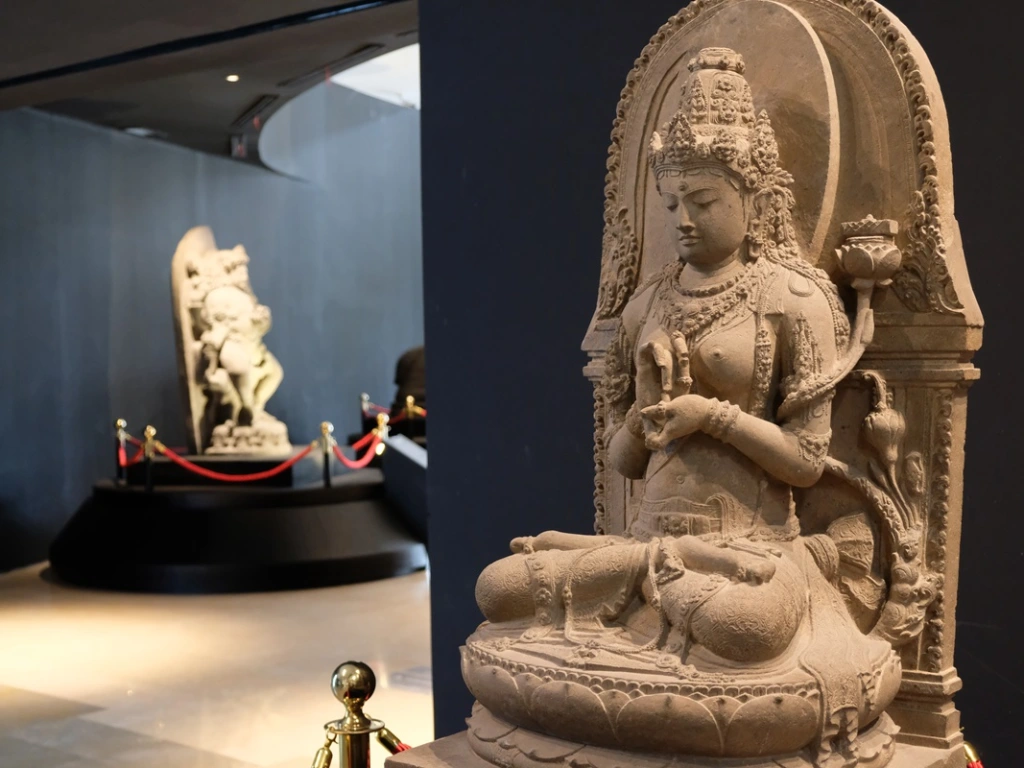
Prajñaparamita, a testament to the pinnacle of Javanese classical art